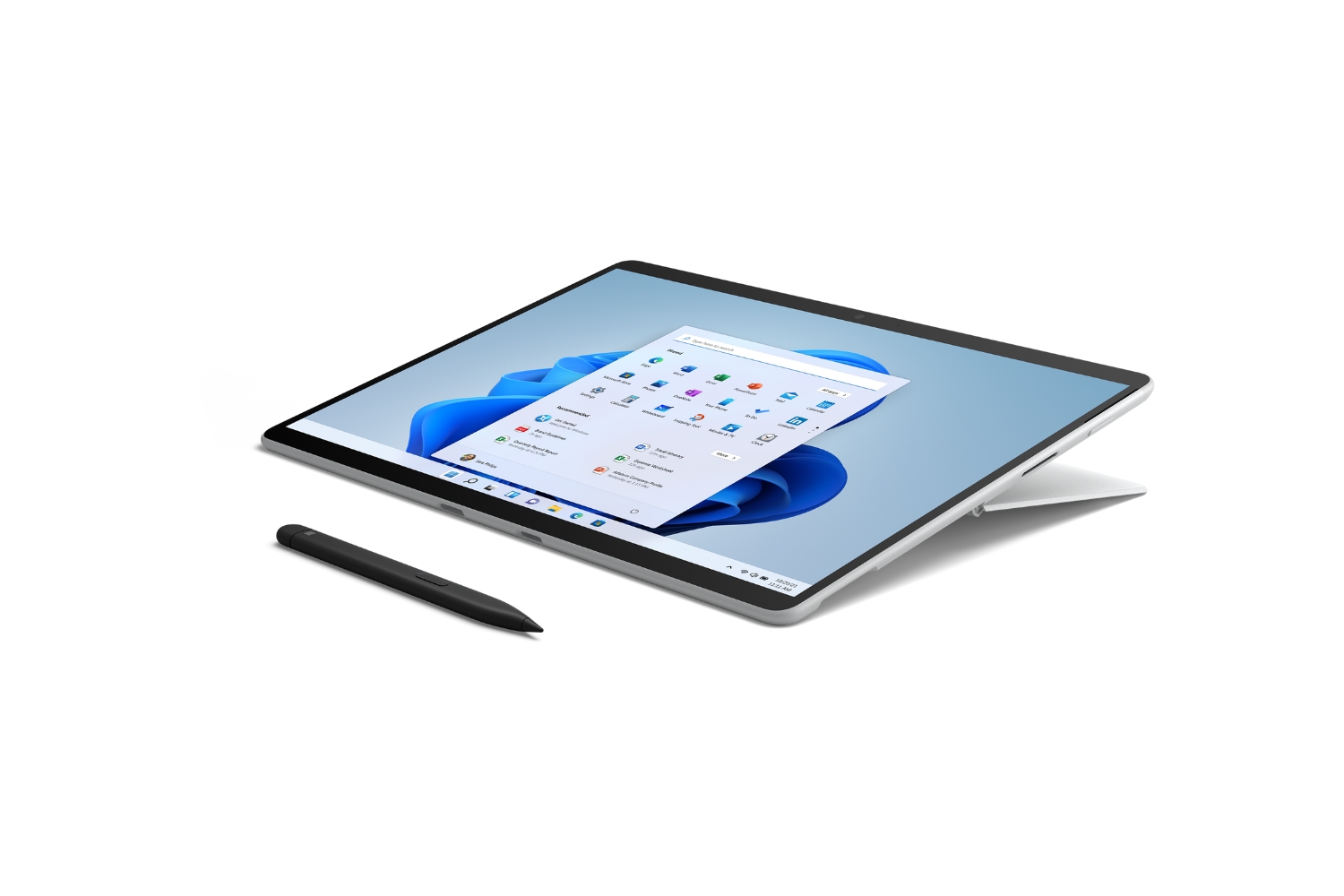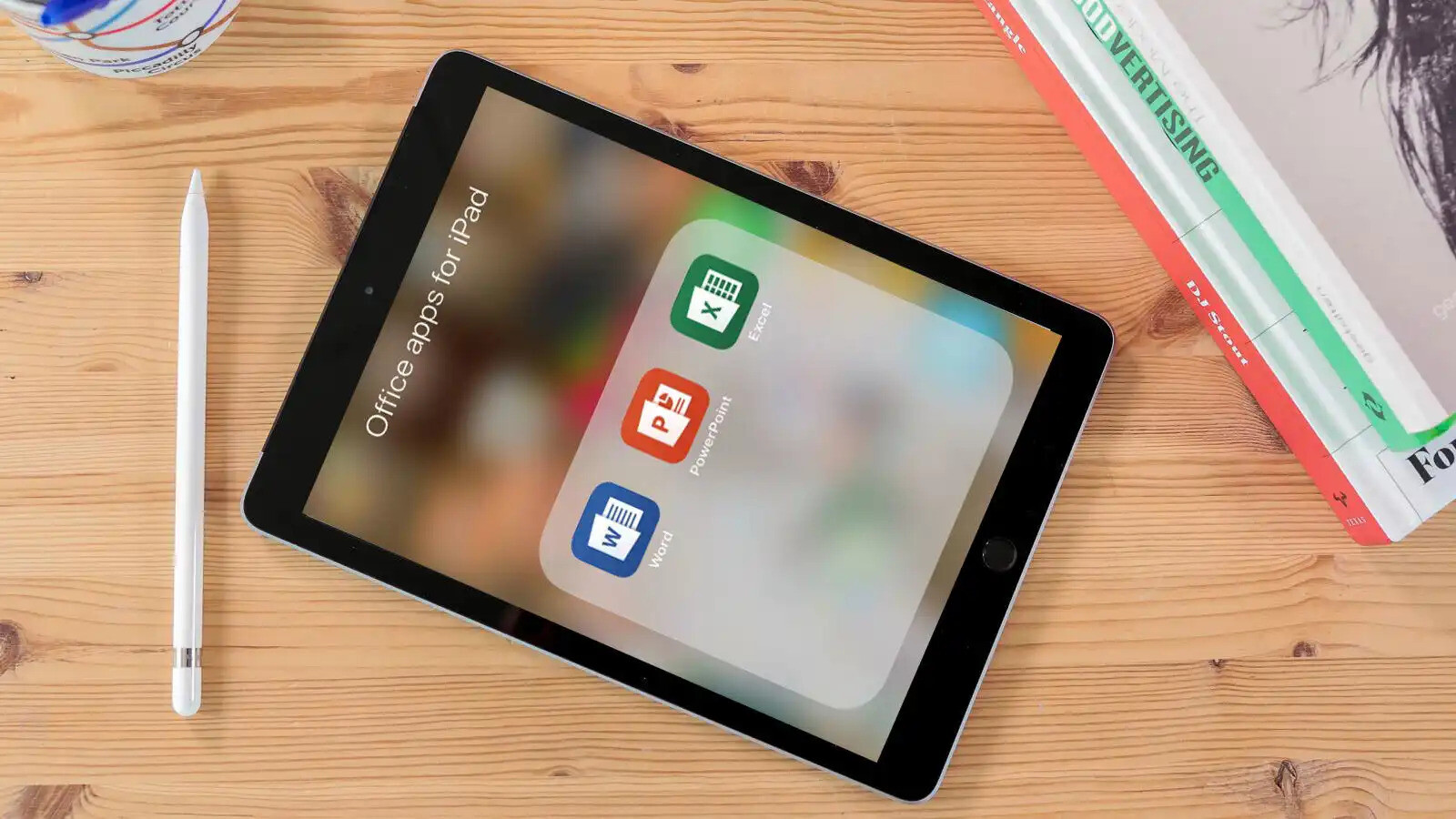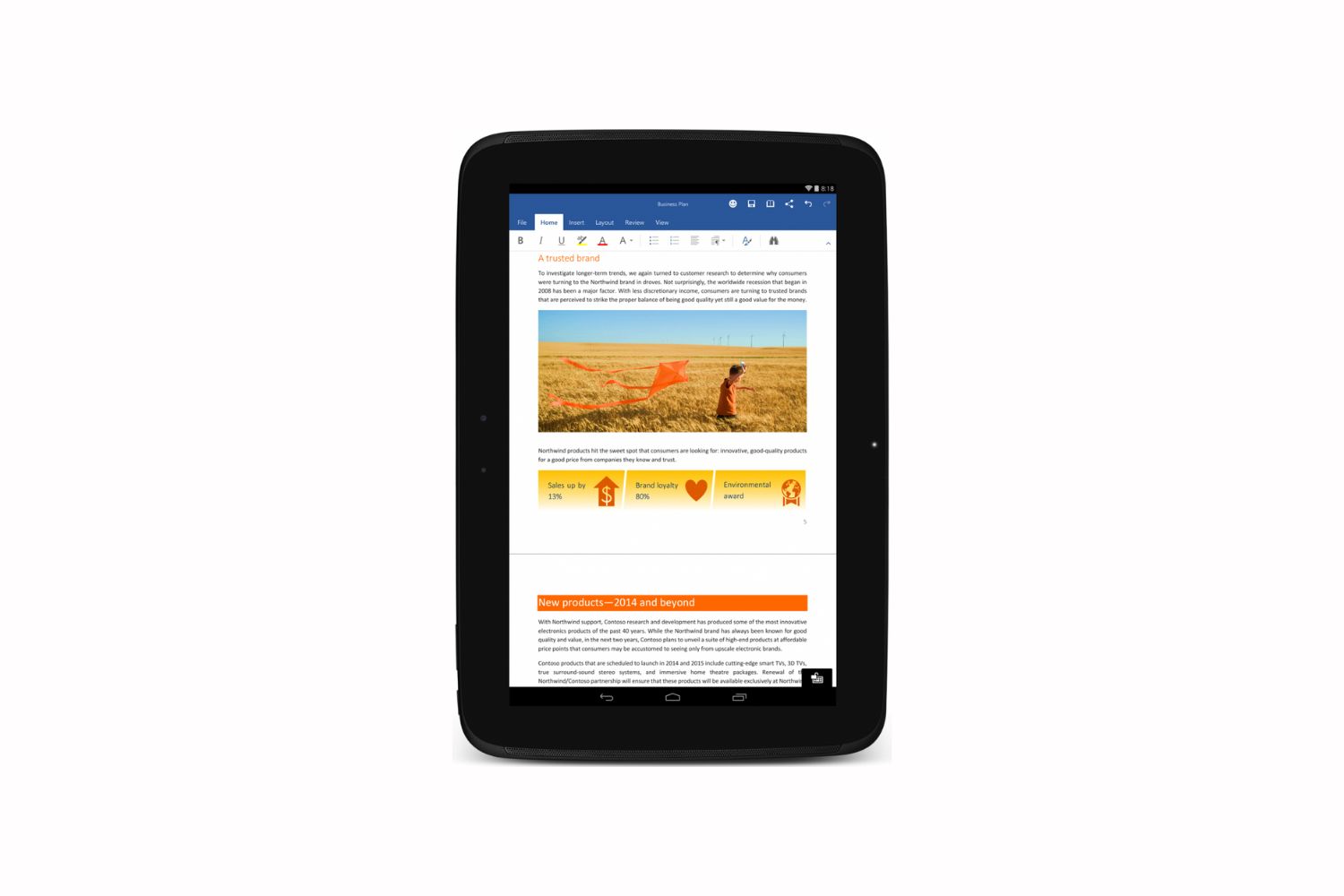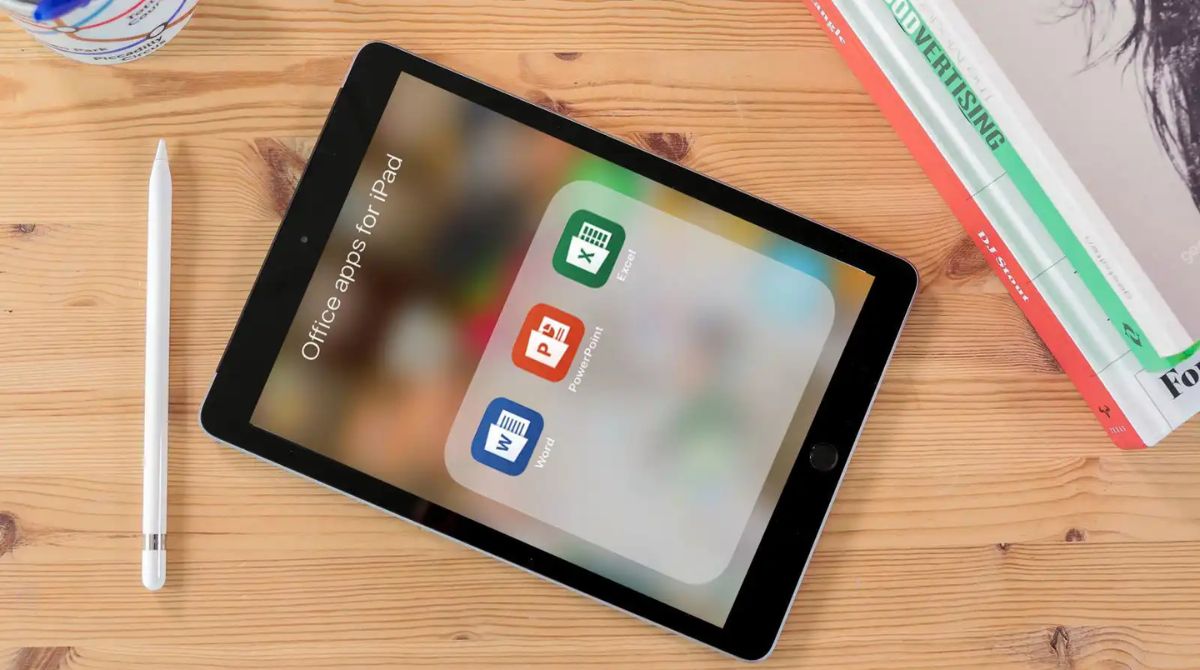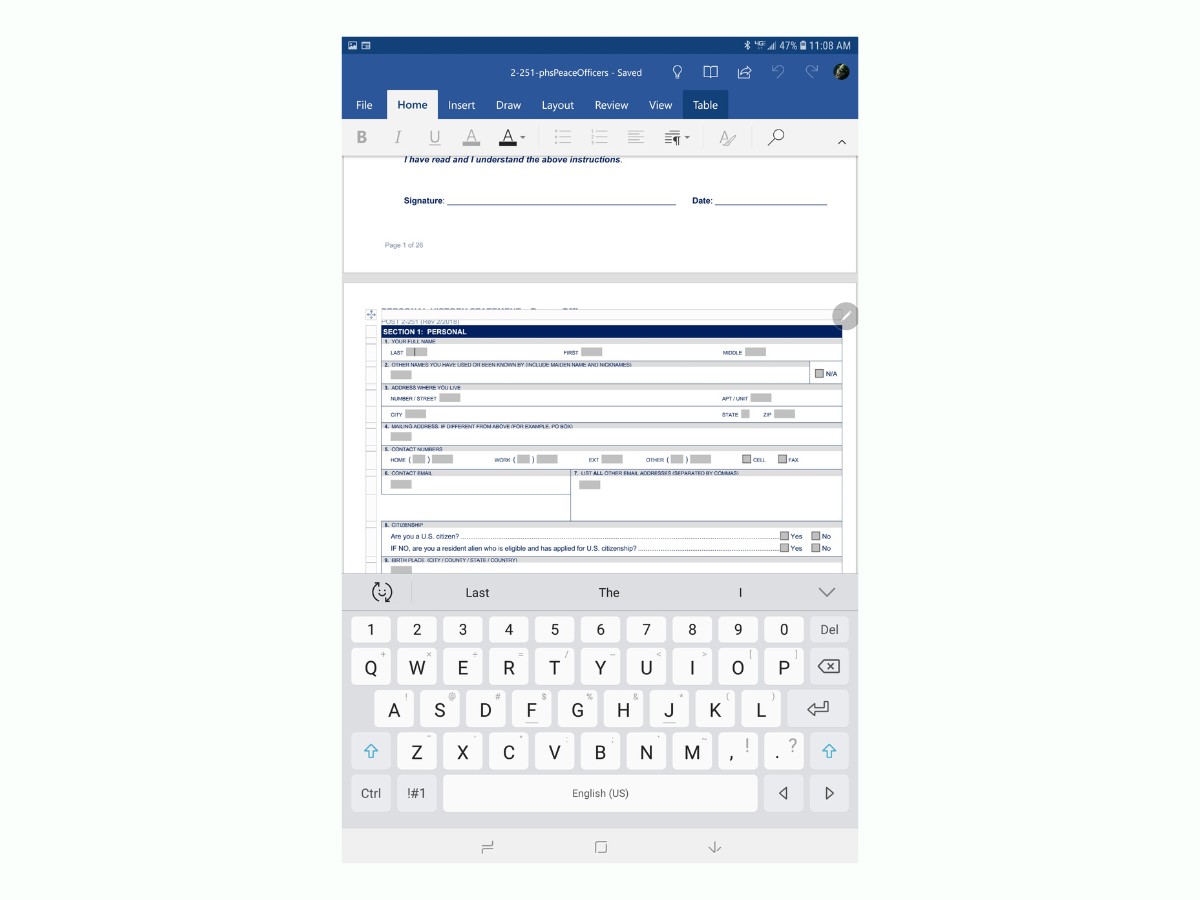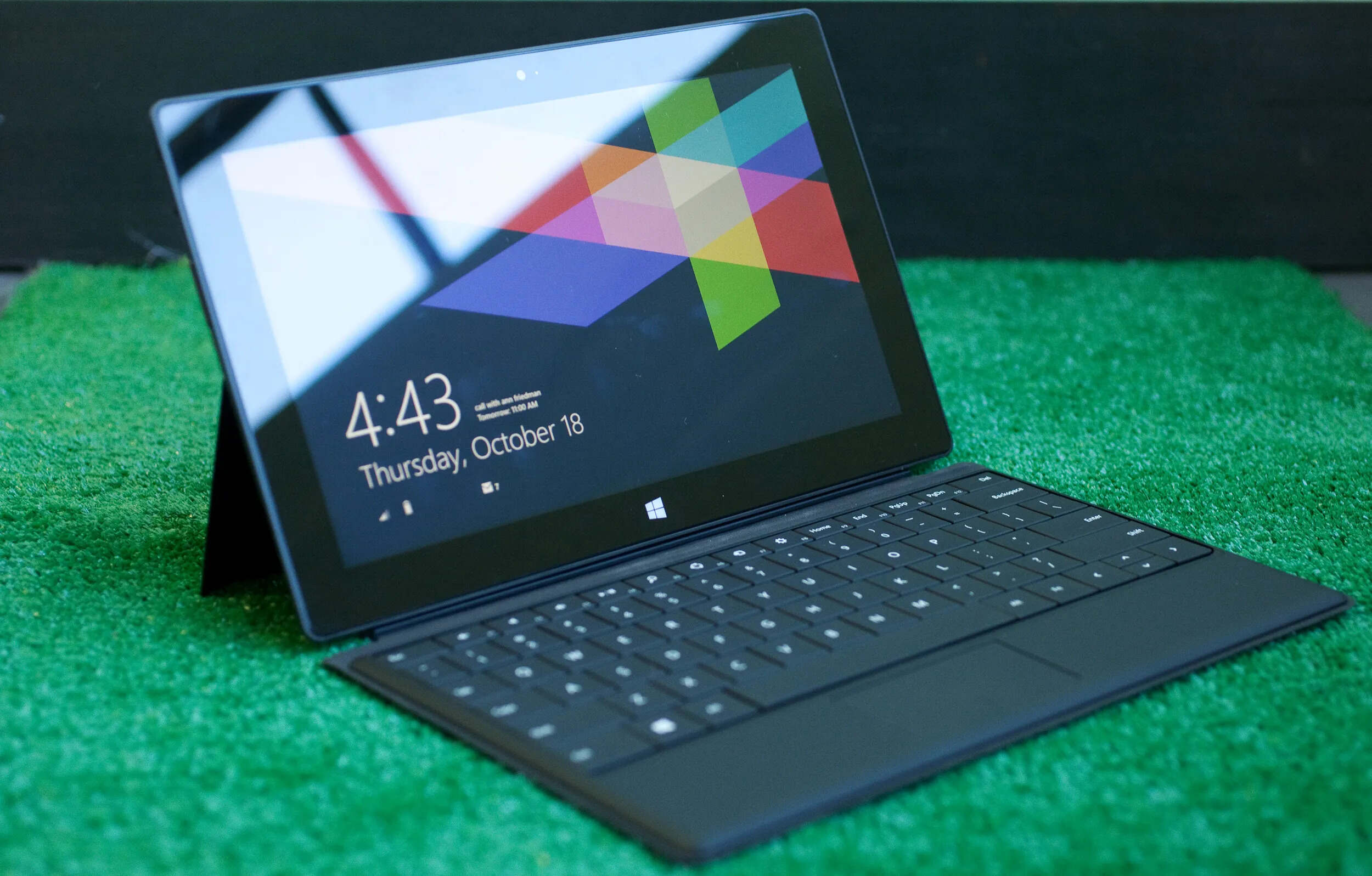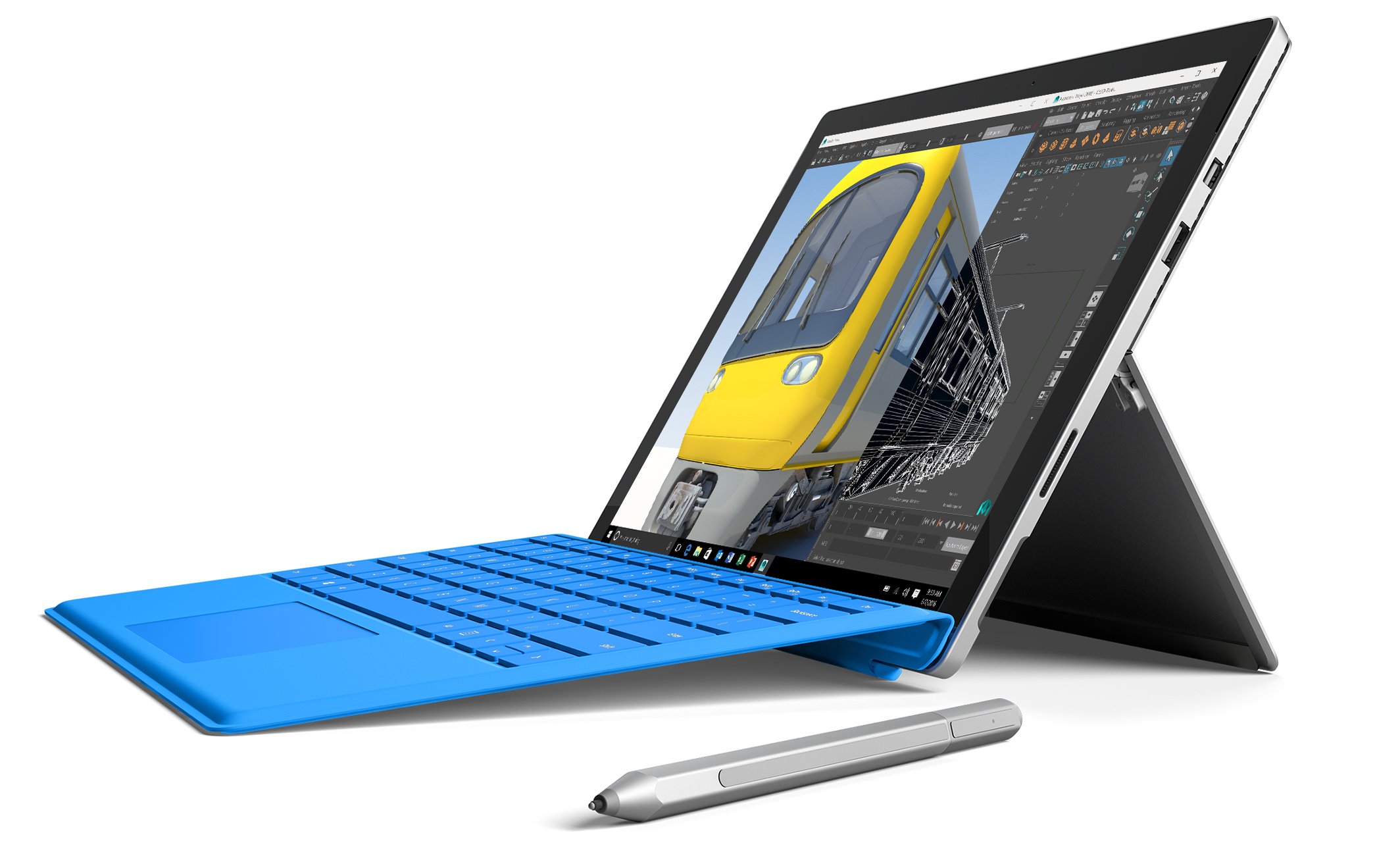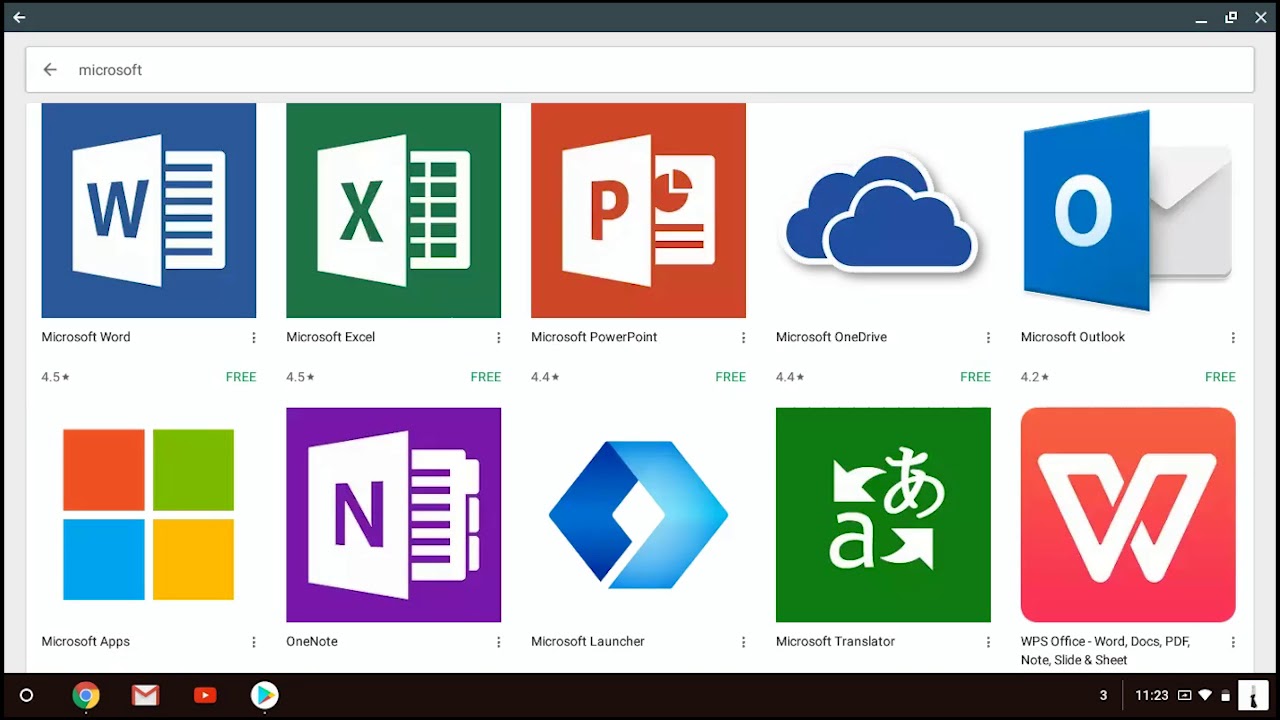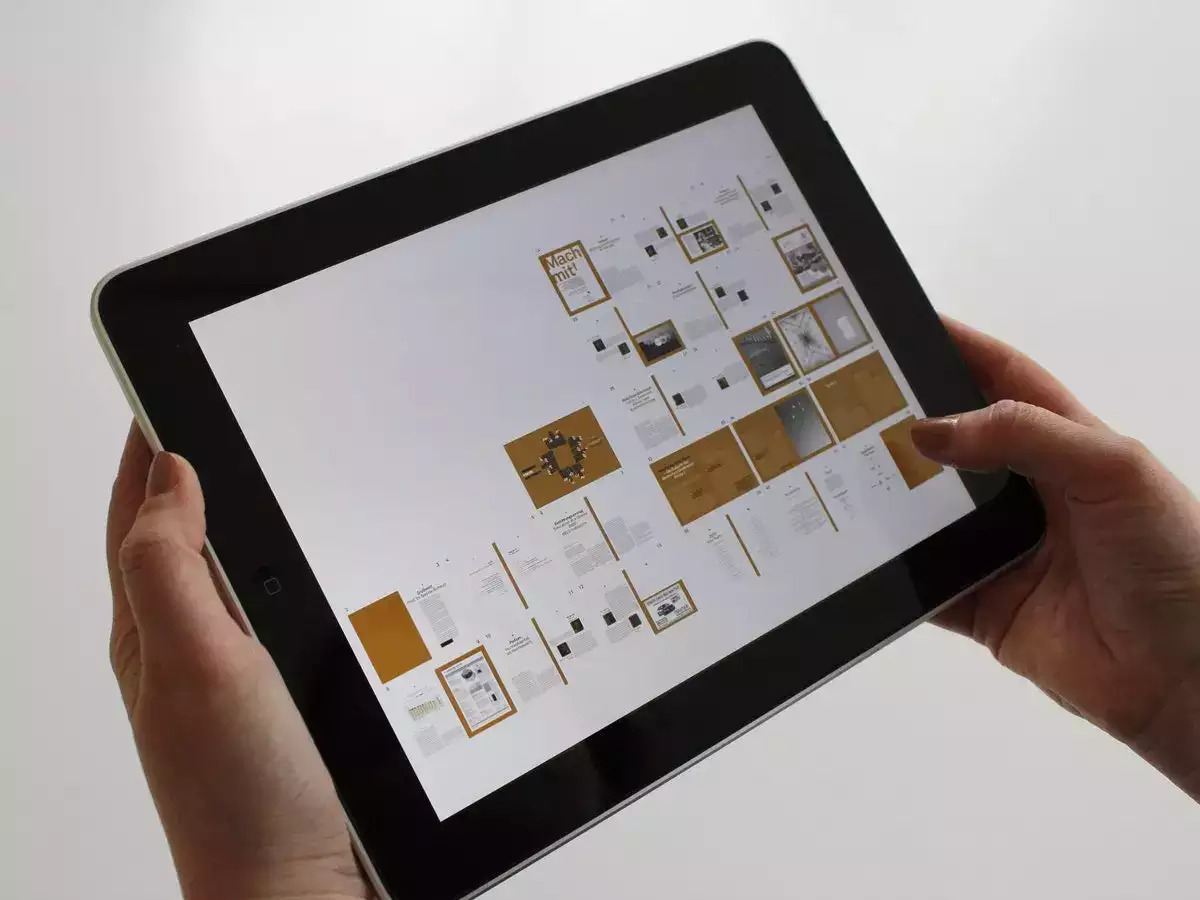Introduction
Microsoft Word is one of the most widely used word processing software in the world, known for its powerful features and user-friendly interface. It offers numerous tools for creating, editing, and formatting documents, making it a preferred choice for professionals, students, and individuals alike.
With the increasing popularity of tablets, many users are wondering which tablet is compatible with Microsoft Word. In this article, we will explore the different tablets available in the market that can run Microsoft Word. We will discuss tablets that run on Windows, Android, and iOS operating systems, and compare their features and capabilities in relation to using Microsoft Word.
Whether you’re a writer, a student preparing assignments, or a professional needing to work on the go, having a tablet that supports Microsoft Word can greatly enhance your productivity and convenience. By having access to Word documents on your tablet, you can easily edit and collaborate on your files from anywhere, without the need for a traditional desktop or laptop computer.
This article aims to provide insights into the tablets that have Microsoft Word compatibility, allowing you to make an informed decision when choosing the right tablet for your needs. We will explore the benefits and limitations of using Microsoft Word on different tablet platforms and provide recommendations based on your preferences and requirements.
Continue reading to discover which tablets are the best options for running Microsoft Word and how to make the most out of this powerful software on a portable device.
What is Microsoft Word?
Microsoft Word is a word processing software developed by Microsoft Corporation. It is part of the Microsoft Office suite, which includes other popular programs like Excel, PowerPoint, and Outlook. Microsoft Word allows users to create, edit, and format text-based documents and is widely used for various purposes, such as creating letters, resumes, reports, and presentations.
With its intuitive interface and extensive features, Microsoft Word offers a range of functionalities that make document creation efficient and convenient. Users can easily type, format, and arrange text, insert images and tables, apply styles and formatting options, and collaborate with others in real-time. The software also provides tools for spell checking, grammar checking, and tracking changes, ensuring the accuracy and professionalism of the documents.
Microsoft Word supports a wide array of file formats, including its native .docx format, as well as compatibility with previous versions of Word, Rich Text Format (RTF), and plain text files. This allows users to seamlessly share documents across different platforms and devices, ensuring smooth collaboration and accessibility.
In addition to its basic word processing capabilities, Microsoft Word offers advanced features like mail merge, which allows merging data from external sources into personalized documents, and the ability to create professional-looking templates for consistent document formatting. The software also integrates with other Microsoft Office applications, facilitating seamless data sharing and enhancing productivity.
Over the years, Microsoft Word has evolved to meet the changing needs of its users. The software is regularly updated with new features, security enhancements, and performance optimizations, ensuring that users have access to the latest tools and technology for efficient document management.
Overall, Microsoft Word is a powerful and versatile word processing software that provides users with the necessary tools to create, edit, and manage documents efficiently. Its user-friendly interface, extensive features, and compatibility with various file formats make it a popular choice among professionals, students, and individuals who require a reliable and robust word processing solution.
Tablets that run on Windows operating system
When it comes to running Microsoft Word, tablets that operate on the Windows operating system offer a seamless experience. These tablets provide full compatibility with Microsoft Office suite, including Microsoft Word, allowing users to access and edit their documents with ease.
The Microsoft Surface Pro series is a notable example of tablets that run on the Windows operating system. These tablets offer a powerful combination of hardware and software, providing a laptop-like experience in a compact and portable form factor. With their high-resolution displays, touch-sensitive screens, and detachable keyboards, the Surface Pro tablets are ideal for word processing tasks.
Another popular option is the Lenovo ThinkPad tablet series, which features Windows-based tablets designed specifically for professional use. ThinkPad tablets come equipped with high-performance processors, ample storage, and a stylus pen for precise input and annotation, enhancing the productivity of Word users.
Additionally, there are a variety of tablets from other manufacturers, such as Dell, HP, and Asus, that run on the Windows operating system. These tablets provide users with the familiar Windows interface and seamless integration with Microsoft Office applications.
One significant advantage of Windows tablets is the ability to use the desktop version of Microsoft Word. While other tablet platforms may offer mobile or web-based versions of Word, Windows tablets allow users to access the full suite of features and functionalities found in the desktop version. This includes advanced formatting options, macros, and extensive customization capabilities.
Moreover, Windows tablets offer compatibility with a wide range of file formats, ensuring that documents created or edited on other devices can be easily accessed and modified. This interoperability makes Windows tablets a suitable choice for individuals who frequently collaborate with others or work on projects across different platforms.
Overall, tablets that run on the Windows operating system provide a robust and versatile platform for using Microsoft Word. With their powerful hardware, support for the full desktop version of Word, and compatibility with various file formats, these tablets offer a seamless and efficient word processing experience.
Tablets that run on Android operating system
Android tablets have gained popularity over the years for their versatility, affordability, and extensive app ecosystem. While they may not natively run Microsoft Word, there are several options available for users who want to use Word on their Android tablets.
One option is to download the Microsoft Word app from the Google Play Store. The Word app provides a mobile version of the software, allowing users to create, edit, and view Word documents on their Android tablets. The app offers a user-friendly interface and supports essential features like formatting, spell checking, and document collaboration.
Another alternative is to utilize cloud-based solutions like Microsoft Office Online or Google Docs. These web-based platforms allow users to access and edit Word documents directly from a web browser on their Android tablets. Users can login to their Microsoft or Google accounts, respectively, and access their documents anytime, anywhere, without the need to install any additional software.
For users who prefer a more integrated experience, Samsung tablets offer a unique advantage. Samsung has partnered with Microsoft to optimize their tablets for the full Microsoft Office suite, including Word. The pre-installed Microsoft Office applications offer a seamless experience with features like S Pen integration for precise input and annotation.
It is important to note that while the mobile versions of Word on Android tablets may not have the same extensive features found in the desktop version, they still provide sufficient functionality for basic document creation and editing needs. Additionally, cloud-based solutions ensure compatibility across different devices and platforms, allowing users to seamlessly switch between their Android tablets and other devices when working on Word documents.
Overall, while Android tablets may require using mobile or cloud-based versions of Microsoft Word, they provide a cost-effective and flexible solution for users who want to run Word on their tablets. With the availability of the Microsoft Word app and cloud-based options, Android tablet users can still create, edit, and collaborate on their Word documents with ease.
Tablets that run on iOS operating system
iOS tablets, commonly known as iPads, have become incredibly popular for their sleek design, user-friendly interface, and extensive app ecosystem. When it comes to running Microsoft Word, iPads offer a range of options for users.
The most straightforward way to use Microsoft Word on an iPad is by downloading the Microsoft Word app from the App Store. The app provides a mobile version of Word, offering users the ability to create, edit, and view Word documents on their iPads. The app is optimized for touch gestures and provides a familiar interface to Microsoft Word users.
In addition to the Microsoft Word app, iPads also have access to other apps like Apple’s Pages, which is part of the iWork suite. Pages offers similar functionality to Word and supports popular file formats like .doc and .docx, making it a viable alternative for iPad users who prefer Apple’s ecosystem.
Furthermore, cloud-based solutions such as Microsoft Office Online or Google Docs can also be accessed through the iPad’s web browser, allowing users to work on Word documents without downloading any additional apps. These platforms provide seamless integration with Microsoft Word, allowing users to access their documents and collaborate with others on their iPads.
For users who require a more desktop-like experience, the iPad Pro models offer advanced features that enhance the usability of Microsoft Word. The larger screen size, compatibility with Apple Pencil, and support for detachable keyboards provide a more comprehensive workstation-like environment for word processing tasks.
While the mobile versions of Word on iPads may not have the same extensive feature set found in the desktop version, they still offer a smooth and efficient experience for creating and editing documents. The touch-optimized interface and integration with cloud storage services like OneDrive or iCloud ensure that users can seamlessly access their Word documents across different devices.
Overall, iPads have a strong ecosystem of apps and cloud-based solutions that provide numerous options for running Microsoft Word. With mobile apps, cloud-based platforms, and iPad-specific productivity tools, users can easily work on Word documents on their iPads while leveraging the sleek and intuitive design that Apple devices are known for.
Comparing tablets for Microsoft Word
When choosing a tablet for running Microsoft Word, it’s essential to consider various factors to ensure a seamless word processing experience. Let’s compare tablets running Windows, Android, and iOS operating systems in terms of compatibility, features, and overall user experience for Microsoft Word.
Compatibility: Windows tablets have an advantage in this aspect as they offer full compatibility with the desktop version of Microsoft Word. Android and iOS tablets may require using mobile or cloud-based versions of Word, which may have some functional limitations.
User Interface and Features: Windows tablets provide a familiar interface and offer a comprehensive set of features, similar to the desktop version of Word. Android tablets may require downloading the Microsoft Word app or using cloud-based platforms, while iOS tablets have the Microsoft Word app available in the App Store and offer a touch-optimized interface.
Hardware and Productivity: Windows tablets like the Microsoft Surface Pro series and Lenovo ThinkPad tablets are designed with productivity in mind, featuring powerful hardware, detachable keyboards, and stylus support. iOS tablets like the iPad Pro models offer a similar experience with support for Apple Pencil and compatibility with detachable keyboards. Android tablets provide a range of options and can be suitable for basic word processing tasks.
Collaboration and File Compatibility: Windows and iOS tablets offer seamless integration with cloud storage services and facilitate collaboration on Word documents. Android tablets can also access cloud-based platforms but may require additional apps or services to ensure compatibility with Microsoft Word files.
Price and Availability: Android tablets generally offer a wide range of affordable options from various manufacturers. Windows tablets are available at different price points, depending on the brand and hardware specifications. iOS tablets, particularly the iPad Pro models, tend to be higher priced but offer a premium user experience.
Ultimately, the choice of tablet for Microsoft Word depends on individual preferences, budget, and specific requirements. Windows tablets provide the closest experience to using Microsoft Word on a desktop computer, while Android and iOS tablets offer mobile and cloud-based solutions that can be convenient for on-the-go usage.
Consider your usage patterns, desired features, and budget when deciding which tablet platform will best suit your needs for running Microsoft Word.
Conclusion
Choosing the right tablet for running Microsoft Word depends on various factors such as operating system compatibility, user interface, features, hardware, collaboration capabilities, and price. Windows tablets provide the closest experience to using Microsoft Word on a desktop computer, offering full compatibility with the desktop version and a comprehensive set of features. Android tablets offer mobile and cloud-based solutions, allowing users to access Word through the Microsoft Word app or cloud platforms like Office Online or Google Docs. iOS tablets, particularly the iPad with the Microsoft Word app, provide a touch-optimized experience and seamless integration with other Apple devices.
For a robust and versatile word processing experience, Windows tablets like the Microsoft Surface Pro series and Lenovo ThinkPad tablets are ideal choices. These tablets offer powerful hardware, detachable keyboards, and stylus support, making them suitable for professional use. However, they may be more expensive compared to Android or iOS tablets.
Android tablets provide a wide range of affordable options from various manufacturers. While they may require using the mobile or cloud-based versions of Microsoft Word, they can still fulfill basic word processing needs. iOS tablets, especially the iPad Pro models, offer a sleek design, a touch-optimized interface, Apple Pencil support, and the Microsoft Word app from the App Store.
In conclusion, the choice of tablet for running Microsoft Word ultimately depends on individual preferences, specific needs, and budget considerations. Whether you prioritize a desktop-like experience, affordability, or seamless integration with other devices, there is a tablet solution available for you. Consider the factors discussed in this article, weigh the pros and cons, and choose the tablet that best suits your requirements to enjoy a seamless and efficient Microsoft Word experience on the go.







